news Taiwanese electronics giant ASUS this morning announced that its combination smartphone, tablet and netbook device the PadFone, would launch in Australia through Harvey Norman from 14 August, retailing locally for $999.
The core of the PadFone is a smartphone running version 4.0 (Ice Cream Sandwich) of Google’s Android platform. The device features a 4.3″ super AMOLED touchscreen running at a resolution of 540×960 and with a pixel density of 256 ppi and a dual-core 1.5GHz processor (Qualcomm’s Snapdragon S4 8260A model).
The PadFone also comes with the ability to take a microSD card up to 32GB, and comes with 1GB of memory. It supports HSDPA speeds for 3G access at up to 21Mbps, and HSUPA speeds of 5.76Mbps for uploads., and can shoot 1080p HD video from its eight megapixel camera. It also comes with an Adreno 225 graphics chip. and 32 GB of on-board storage.
However, unlike most traditional smartphones, the PadFone can also be docked with a dedicated external tablet to dramatically extend its functionality. This so-called PadFone Station has a whole series of specifications all of its own — such as a 10.1″ WXGA TFT touchscreen running at a resolution of 1280×800. Both the PadFone itself and the docking station come with screens covered with Corning’s tough Gorilla Glass. When the PadFone is docked with the tablet docking station, it provides all the processing power for the tablet – a little like a PC provides all the processing power for an externally connected monitor.
As with ASUS’ other Transformer-branded tablets, there’s also a second keyboard docking station which you can connect the PadFone Station to gain even further functionality. And the tablet comes with a Bluetooth stylus which can also be used to make and receive phone calls when the phone is docked with the tablet module.
“With 54% of smartphone owners also wanting but not owning a tablet device, ASUS devised the PadFone to eliminate irksome issues experienced by smartphone and tablet owners,” the company said in a media release issued today. “A clever creation, the PadFone combines two of today’s quintessential gadgets into one.”
“A perfectly paired smartphone and tablet, the PadFone with its unique all-in-one functionality affords the benefits of possessing a single device, as well as value for money. Offering one-stop storage and shared 3G network access, the smartphone provides all the processing power and storage of the PadFone. Users no longer need to sync data between devices and only require one data plan, presenting affordability and eliminating the use for WiFi connectivity.”
Early reviews of the PadFone have been cautiously optimistic. The Verge’s review of the device stated that the author believed the docking model was the future, but that the PadFone’s actual execution felt “more like a tech demo than a viable product”, with some outstanding issues. Engadget appeared to agree, in its own review, stating: “What we see here is just the core of the idea, the foundation to get things started, while the rest of the product seems half-finished and doesn’t yet realize its full potential.”
opinion/analysis
I really like the idea of the PadFone, but from the looks of early reviews, ASUS hasn’t quite gotten this one right yet — although it’s heading in the right direction.
I’d also very heavily question whether the price of the device as a whole is worth it. At the moment you can buy an 11″ MacBook Air (I have one, they’re fantastic) for just $1,099 — $100 more than an ASUS PadFone. Couple that with an iPhone 4S, HTC One X/XL or Samsung Galaxy S III on a low-range monthly mobile plan for between $40 and $60 a month, and you’re getting a sledload more functionality than the PadFone, for a not incomparable price. Or, you could pick up one of these smartphones (all rated better than the PadFone itself), plus a $539 iPad 2 or equivalent Samsung Galaxy Tab tablet for around the same price.
Unless you really, really, want to dock your smartphone into your tablet and transform the whole lot into a netbook-like device, I just can’t see why you’d pass up what look like more functional options just for the ability to integrate all of your disparate devices together. It’s not as if a separate tablet takes up more space in your bag than the PadFone’s tablet, after all.
Of course, I could be wrong — I haven’t tested the PadFone yet, and the form factor could be a real winner. But I suspect it will remain a gimmick for now, until the technology matures more, becomes more of a standard, and takes off down the track in the future.
Image credit: ASUS

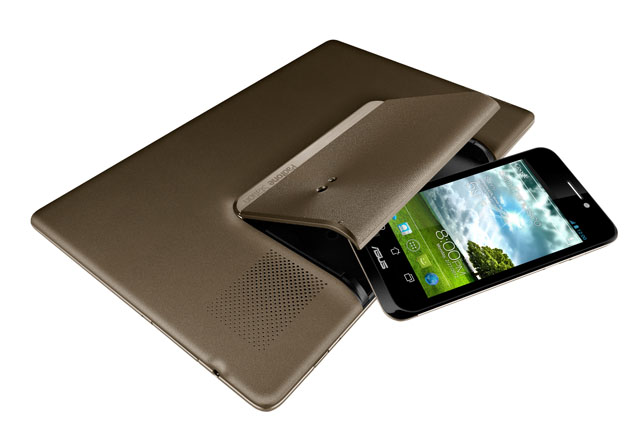
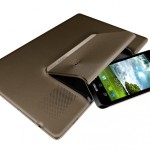
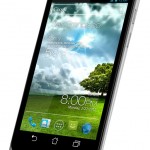

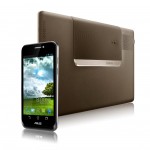

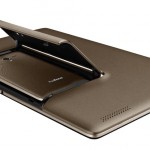
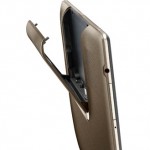
Spec page says wcdma 900/2100. So no Telstra or 850 voda! Not supporting both 850 and 900 is a fail these days.
So it’s a Motorola Atrix 4G, but over a year later?
I really like the look of it – and .. are those soft-buttons?
Gotta say the one thing I hate about my one XL, is the integrated buttons.
Pricing is off, but – given a phone costs 600 dollars outright, there is a lot to like about an “ipad-mode” upgrade.
Your macbook air might cost a thousand dollars, but does it come with a phone? Or do you have to buy a phone in addition to your macbook. (iphones back in the day were $600 dollars outright, so putting the tablet into perspective means more like 4-500 dollars for the tablet component, which is very reasonable (and where Asus probably came up with their pricing).
Can you get the tablet-dock seperately from the phone?
I think the idea is great, and over time the pricing will “level” out to something the market is willing to pay… two things to note from my perspective:
1. ASUS are being quite smart. They would be fully aware that consumers change their mobile handsets on average every 18-24 months, and their tablets every 3 years. By using the docking function, this will ensure the user remains ASUS aligned for a longer period of time – this is a great marketing and customer retention tactic.
2. From a consumer perspective, the above is not so favourable. And mobiles tend to get beatn up and dropped/damaged, most users look forward to their “plan” finishing so they can upgrade to the new i-device that’s on the market. This will render the tablet useless!!! So in 18-24 months, you will not upgrade your phone, but also need to fork out $$$’s for a new tablet!
I agree with you Renai. I would prefer to get a MAC/Ultrabook PLUS a phone (free if on the right plan) and have two devices with more functionality and capability that I can upgrade when required, rather than be forced!
It’s an interesting gadget but as far as “hybrid” designs go I prefer their Transformer.
One question I have – not having a vast experience of tablet type products – is how many support voice calls (perhaps with headset); will the PadFone, for example, make a voice call while in the “docked” mode?
I’m almost never without a back pack etc and I quite often use my headphones to make a voice call with my phone so I’d gladly trade a bluetooth headset + pad.
Comments are closed.